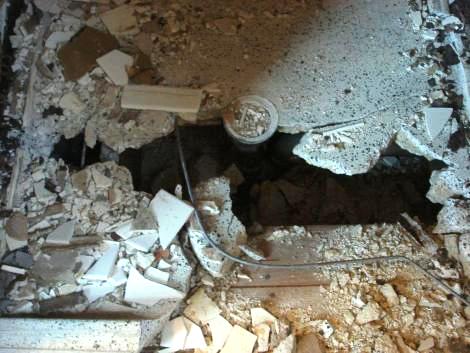
This is the last step of the demolish, removing the floor of the shower. This was obviously not the original floor, but its hard to tell just what was new and what was original. The floor itself is made of a solid 2 inches of concrete, which I think was precast. It was quite sturdy, but after a bunch of whacks with the sledge it cracked into pieces. Unfortunately this was the easy part. The floor had a few pieces of re-bar through out it, as well as some metal on the edges. I’m not sure if the metal on the edge was meant as a shower pan, or was leftover from the original installation. Whatever it was for, it had mostly rusted away. What hadn’t rusted away however was intact enough to make removal quite difficult as it held the large chunks of concrete together. At this point I had already generate a few hundred pounds of debris, and was not looking forward to getting the garbage men to pick up a hundred pounds of concrete.